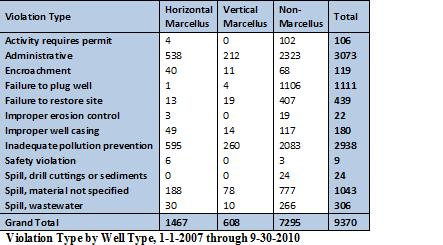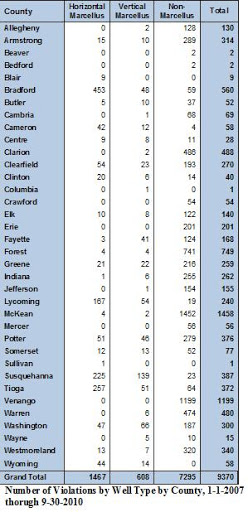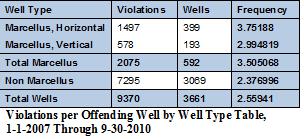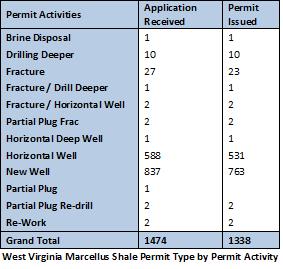Reposted with permission from Mike Benard, Spectra Energy Watch
ArchivedThis page has been archived. It is provided for historical reference only.
Spectra Energy Watch recently conducted an email interview / conversation with Ben Wallace. Ben Wallace is Chief Operating Officer (COO) of PENNECO, an oil and gas exploration company headquartered in Westmoreland County, Pennsylvania.
PENNECO owns interests in more than 1,200 wells in 5 states, according to its website, and most of its wells are hydraulically fractured.
‘A Belief That Industry Will Not Answer Direct Questions’
In an exchange of three e-mails with Spectra Energy Watch’s blog, Wallace noted: “… I sense that one of your great frustrations is a lack of access to industry – or a belief that the industry will not answer direct questions…”
Yes – industry will not answer direct questions. It prefers platitudes like this one from Spectra Energy: Safety is our franchise. It’s what we ‘do.’
The gas industry wants it both ways. For example, on one hand it says hydraulic fracturing has been in use for 60 years with no adverse effects.
This is a half truth at best. Hydraulic fracturing has evolved as a technique over several decades. Slickwater, high-volume hydraulic fracturing began in the mid-to-late ’90s in Texas; and there is ample evidence that it has adverse effects on water and air.
Despite the gas industry’s claim of 60 years of hydraulic fracturing, it then claims to be a “nascent industry” that needs time to grow in states like Pennsylvania and New York (without a severance tax).
What is so hard about telling the truth about hydraulic fracturing?
PENNECO COO Ben Wallace was sincere in answering questions directly, but many of his responses illustrate how wide the gulf (no pun intended) is between the gas industry and those who experience the adverse effects of high-volume, slick-water hydraulic fracturing from shale gas wells.
For example, here are excerpts from Wallace’s comments:
- “I personally have no objections to injecting frac fluid into oil and gas bearing reservoirs and I, as a private citizen, am quite comfortable with the regulations in force by the individual states regarding this activity. Hydraulic fracturing presents no threat to clean safe drinking water.”
- “It does not bother me that a Marcellus fracture treatment uses 20 tons of chemicals diluted in 1,000,000 gallons of water and that the slurry is injected into a natural gas bearing formation multiple thousands of feet below any fresh water aquifers isolated by steel casing and cement.”
- “I would not support requiring closed loop systems to eliminate plastic lined ponds nor would I support installing vapor recovery units on tanks. Again, the relative risk is minimal and it only serves to increase the cost of energy to the consumer.”
- “In general, I do not support restrictions on drilling beyond those that currently exist. Sufficient zoning regulations are already in place within individual communities to govern this activity.”
Ben Wallace, like many of his industry colleagues, speaks in absolutes with complete confidence that only the ‘perfect world’ model exists in gas industry operations.
Then he offers comments like this:
I suggest that all those who are opposed to drilling and to the extractive process cease using energy. Turn of [sic] the cell phones. Turn of [sic] the lights. Power down the laptops. Park the cars. Turn of [sic] the air conditioner. Eat raw food. Stop using refrigeration. Until the critics are willing to do that, they are hypocritically pointing the finger of blame. The energy industry simply provides the product to which our society is complicity addicted.
The defect of that kind of emotional venting is that it can fly back in your face – tit for tat. Gas execs argue that the hydraulic fracturing fluid – chemo frack fluid, laced with toxic chemicals – is benign. Great. Drink it yourself.
In fact, PENNECO COO Ben Wallace is on the record in a letter to the U.S. Environmental Protection Agency (EPA) suggesting (carefully) that, “hydraulic fracturing chemicals in dilute solution” is comparable to Coca-Cola.
He agrees, of course, “it would be foolish to drink frac fluid.”
Okay, we got carried away. Don’t drink the frac fluid. But what about leadership by example from the gas industry? If “Study after study has found hydraulic fracturing to be safe,” as Wallace says in his letter to the EPA, why is this blog still unable to identify executives (senior managers) who have such operations on their property, near their home?
Ultra NIMBYs of the Gas Industry
As Wallace acknowledges: “I do not have a shale gas drilling rig on my property.” Nor is there a frac pond on his property.
Imagine gas industry execs with hydraulic fracturing operations near their homes who step up and acknowledge that they believe so strongly in the inherent safety of shale gas extraction that they “live” the principle, so to speak.
The great shame of the gas industry is that its execs want these wells on YOUR property, but not THEIR property. Gas industry senior managers are the new ultra NIMBYs.
Public Opinion Turning Against Gas Industry
No wonder Pennsylvania Governor Ed Rendell, while declaring himself a “protector” and a “good spokesman” for the gas industry, worries that “public opinion is starting to turn [against the gas industry] because I don’t think the industry’s done a great job of public relations.”
While the industry and Penneco’s Ben Wallace declare hydraulic fracturing to be safe, the “protector” and “good spokesman” for the gas industry admits there are “five challenges” – all of them environmental.
The five “challenges” of shale gas extraction, in Rendell’s own words:
- How to divert the millions of gallons of water that are necessary to operate the drilling?
- How to prevent gas migration?
- What do we do with the frac water – how do we dispose of it or beneficially reuse the frac water?
- What about the infrastructure? What about the roads with the heavy truck traffic that’s coming in and out of shale drilling areas – mostly in our northern tier itself which is a fairly undeveloped part of Pennsylvania? And
- How do we protect the natural beauty of the state? Pennsylvania was given by the Lord an incredible bounty of natural and wild lands. There are more natural and wild acres in Pennsylvania than the entire states of Connecticut and Rhode Island put together. And Pennsylvanians feel very strongly about that. We’re a great sportsmen’s state – fishing and hunting; and our wild and natural areas are very treasured.
Rendell made his remarks in a roundtable discussion with gas and oil execs in Dallas on March 25. If the “protector” of the gas industry in Pennsylvania acknowledges multiple risks to the environment, why can’t the gas industry?
Links and Resources











